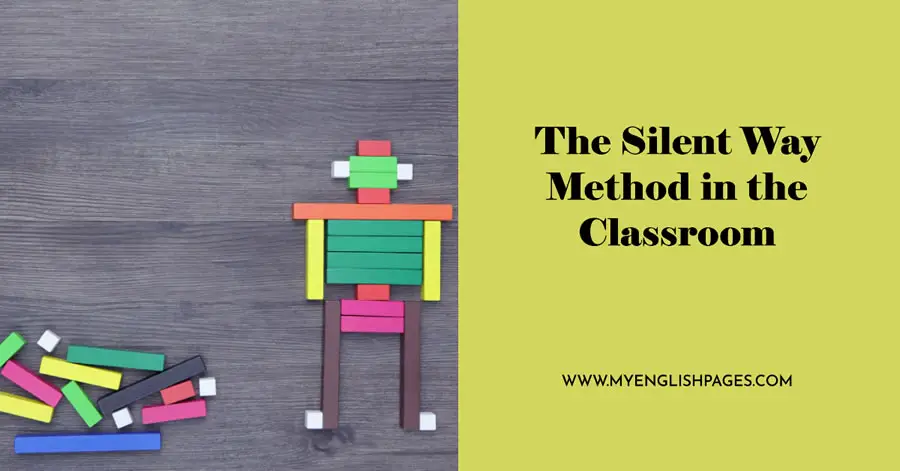Table of Contents
Introduction
When exploring language teaching methods, the Silent Way stands out as a minimalist, student-centered approach.
But how can teachers implement this effectively, and what are its limitations?
In this post, we’ll take a fresh look at the Silent Way in the classroom, explore its unique aspects, and examine how it can be complemented with other methods for an engaging classroom experience.
Watch The Silent Way Method Implementation in the Classroom!
What is the Silent Way Method?
The Silent Way Method, developed by Caleb Gattegno, prioritizes student autonomy and problem-solving in language learning. Unlike traditional methods where the teacher dominates the classroom, this approach flips the script.
Teachers remain mostly silent, allowing learners to take control of their own discovery process.
Summary of Core Principles:
- Learning through discovery: Students construct knowledge through guided problem-solving rather than rote memorization.
- Physical materials: Tools like Cuisenaire rods and color-coded charts are central to the method.
- Teacher as facilitator: Teachers provide minimal input, acting as silent guides rather than direct instructors.
Implementing the Silent Way in the Classroom

While the method’s principles are simple, putting them into practice requires preparation and creativity. Here’s how it can be applied effectively:
1. Set clear learning objectives
Focus each session on specific goals, such as pronunciation, sentence construction, or verb conjugation.
2. Use visual aids and tools
Introduce Cuisenaire rods or charts to visually represent concepts. For example:
- Assign colors to different verb tenses or sounds.
- Use rods to build sentences, with each rod representing a word or concept.
3. Encourage student interaction
Let students work in pairs or small groups to solve language problems. This fosters collaboration and allows them to learn from each other.
4. Guide without dominating
Use gestures or brief prompts to steer students in the right direction, but resist the urge to explain or correct directly.
Limits of the Silent Way

Despite its innovative approach, the Silent Way has some limitations:
- Lack of communication practice
The heavy focus on problem-solving can neglect real-life conversational skills, which are crucial for language learners. - Steep learning curve for teachers
Mastering the role of a “silent” facilitator requires practice and a shift in teaching mindset. - Limited materials
The rods and charts, while effective for certain aspects, cannot address all language complexities (e.g., nuanced vocabulary or cultural context).
How to Complement the Silent Way
To address these challenges, the Silent Way can be blended with other teaching methods:
- Pair with Communicative Language Teaching (CLT)
Incorporate CLT activities, such as role-playing or group discussions, to enhance conversational fluency. - Use Task-Based Learning (TBL)
Use Task-Based Learning. Design tasks that require students to apply their discoveries in real-world scenarios, like giving directions or writing an email. - Introduce multimedia tools
Supplement the physical materials with videos, songs, or interactive games to expand language exposure.
Conclusion
The Silent Way Method challenges conventional teaching by placing students at the center of their learning journey. While its focus on autonomy and discovery is empowering, balancing it with communicative and task-based approaches can provide a more comprehensive learning experience. By blending methods, teachers can create a dynamic classroom that caters to diverse learner needs.
What are your thoughts on the Silent Way? Have you tried implementing it in your classroom?
Watch The Silent Way Method in Action: A Deeper Dive into the Silent Way Method
To further explore the implementation of the Silent Way in the classroom, watch the video below. In this video, we dive into real classroom examples, showcasing how the Silent Way is put into practice and offering insights into the challenges and rewards of using this method.
Video Highlights:
- A discussion on how the Silent Way can be complemented with other methods like CLT and TBL to create a more balanced language learning experience.
- A breakdown of the Silent Way’s core principles and how they come to life in a classroom setting.
- Examples of classroom activities using Cuisenaire rods and charts.
- Real-life teacher-student interactions that demonstrate the silent teacher approach.


